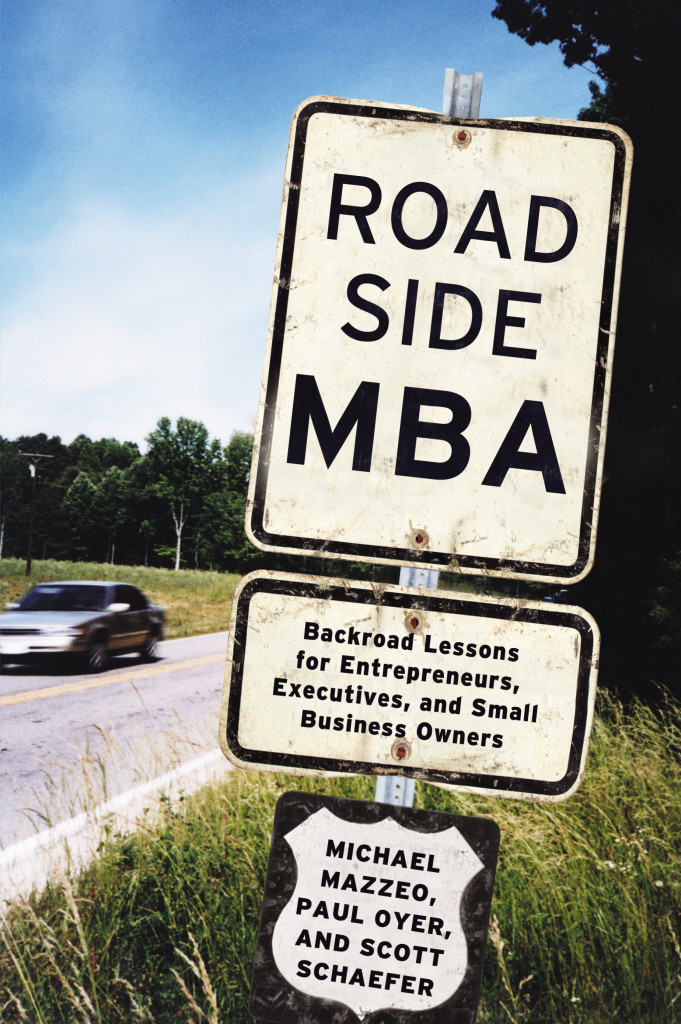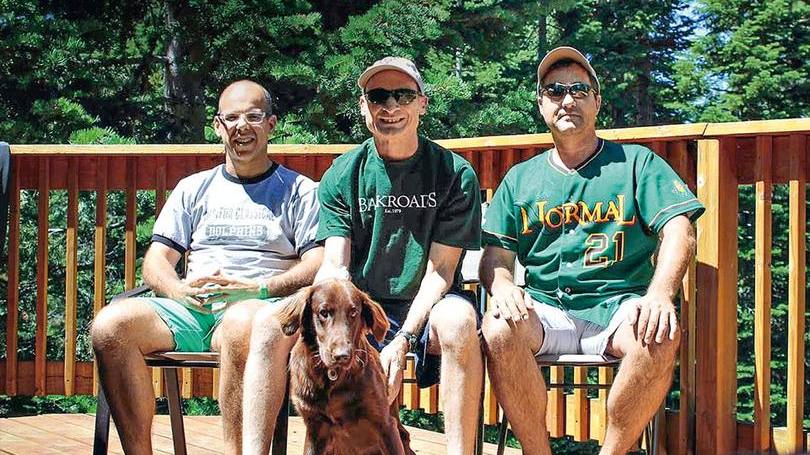I love traveling. I love David versus Goliath tales. And I enjoy reading about business strategies.
Put this together and what have we got? The Roadside MBA by economics and business professors Michael Mazzeo, Paul Oyer and Scott Schaefer.
Armed with PhDs in economics from Stanford and Princeton universities, Mike, Paul and Scott were three divorced dads when they made a total of 6 road trips across different cities and states in the US.
From Denver, Colorado, to Missoula, Montana, Memphis, Tennessee to Atlanta, Georgia, the trio of business academics visited some 45 small businesses spanning a wide mix of trades. They include F&B businesses, book stories, law firms, industrial manufacturers, telcos, and recycling outfits, to theatre schools, bowling alleys and theme parks.
Each company is featured in the form of a case study in a business discipline, be it in marketing, branding, operational management, human resource management, technology, growth, customer service or strategic planning.
Let me provide a brief summary of the lessons in each chapter.
Scaling businesses
The first chapter unpacked how a dental practice, espresso cafe, vintage car rubber parts manufacturer, and grill and bar restaurant scaled their businesses through different strategies.
By spreading out fixed costs over multiple units of production, and reducing their variable costs, these businesses were able to grow. Beyond costs, they also considered issues like demand weighed against the cost of production, as well as how monitoring quality could be done in a cost effective manner.
Raising barriers to entry
Erecting barriers to entry reduces the likelihood of competitors encroaching into your territory. In the case of children furniture retailer Wilcoxson’s Kids Place, the size of their market and formidable costs of entry helped them to save off new competitors.
High sunk costs (ie investments in infrastructure), a minimum efficient scale, and network effects (think Facebook) also helps companies to deter copycats. These were exemplified by Key Fire Hose (a fire hose manufacturer), Prodew (an injection-molded misting system maker), and CollegeFrog (now Accounting Fly) respectively.
Product differentiation
Successful product differentiation in the authors’ opinion is predicated on four key factors:
- Serving target customers well – Offer a product that has greater appeal to one’s target customers. In the case of the Bank of Montana, its higher-wealth and low-transaction-volume consumers preferred better interest rates for their deposits in return for low-touch service.
- Providing clear alternatives – Woman gym Fit Time faces little competition from co-ed gym competitors due to its unique focus on a single gendered customer.
- Having customers who really care – Customise product features to suit a customer’s unique needs. This is exemplified by TiLite’s customised wheelchair which offers active, job-holding persons with disabilities more mobility compared to housebound users of older models of chweelchair.
- Customising efficiently and profitably – The best differentiation strategies must consider the revenue potential of the niche vis-a-vis the costs required to serve it.
Price setting
Part of the marketing mix, the price of a good or service is established through a mix of knowing the product costs, the customers’ willingness to pay, the segmentation of customers, and the opportunities available to bundle products.
In the case of Marietta NDT, a company manufacturing testing equipment specifically designed not to damage objects while they are being tested, the highly specialised expert nature of its business allowed it to charge higher prices so long as its customers were prepared to pay.
Brand management
For small businesses, “getting the word out” and “managing brand” can take up a large chunk of the entrepreneur’s share-of-mind.
The authors offer five different branding strategies for readers to chew over, depending on the nature of their business:
- Experience Goods: Companies whose products are difficult for customers to assess quality need to rely on their reputation, ie track record or recommendations from others. An example here was Blind Squirrel Digital – a computer special effects and animation firm.
- Search Goods: These are products where consumers can assess product quality, but only after costly search. Businesses here, like Morris-Baker Funeral Services, need to advertise to build brand awareness.
- Occasional or Aspirational Purchases: In this category, businesses need to motivate their consumers to shop through persuasive and emotional appeals. An example is Collins Diamonds’ advertisements which induce the purchase of a gift of jewelry.
- Goods that are publicly consumed: Such highly visible brands are used to convey common values and beliefs. An example was how Prices’ Store for Men reinforced the idea that wearing regional brands conveyed “Southern pride”.
- Credence Goods: These are products that are difficult for quality to be assessed even after consumption. Themes of credibility and trustworthiness are needed here.
Negotiating effectively
To secure a win-win outcome in business deals, small businesses can adopt a variety of approaches.
In the case of Eko Compost – a waste processing plant which converts waste water to fertilisers – the company’s location adjacent to its business partner (a wastewater plant) gives it an advantage. This was because Eko Compost was the next-best option for its business partner. By taking care of waste water, the plant can avoid the expensive trucking of its bio-solids to a landfill.
When high fixed investments are involved, as in the case of Gaylord Chemical, it may be more advantageous to negotiate a better agreement up front while it still had better options available.
Having more information and knowing whether you can go it alone also helps businesses in wheeling and dealing. A case in point of the latter is PT Coupling, a hose fixture manufacturing company, which decided that it may make more sense to start its own foundry to ensure quality.
Hiring, staff incentives, and delegation
HR issues can often be a huge headache for small businesses. I guess this was why three whole chapters were dedicated to this topic!
The salient lessons were as follows:
- Hiring: To hire right, companies need to consider the screening costs, balance between productivity and wages, and whether to use self-selection (ie make the job unattractive to the wrong type of worker) or adverse selection (reengineering operations to attract the right kind of worker).
- Employee incentives: The right kind of incentives made a lot of difference to staff performance. Key considerations here include assessing quality in quantity based compensation, using the right performance measure to align employee interests with organisational ones, and using the right form of team-based incentives for motivation.
- Delegation: Unlike larger outfits, small business owners are often more hands-on in managing their outfit. However, more effective delegation of operational responsibilities can be done with adequate information, the right incentives, establishment of appropriate performance measures, considering externalities, and coordinating between different business units.
Battling big boys and pivoting
Towards the end of the book, the authors cover the topics of competitive advantage and long-term sustainability of small businesses.
To beat the Goliaths in the industry, small businesses should do one of four things:
- Understand the strengths of big boys. This is important for them not to waste effort in activities for which large size helps. For example, boutique book seller Christine Kelly avoided discounting best sellers as she can never win in a pricing game against the chains like Barnes and Noble or Amazon.
- Exploit weaknesses. As a smaller and more agile sporting-goods retailer, Mike Bodart could intensify his efforts to provide premium customer service unlike large sporting-goods chains.
- Offer services that big boys don’t. A case in point here is Launch Something. This boutique advertising and marketing agency focused on smaller piecemeal advertising and consulting projects which MNC agencies don’t do well in.
- Utilise smaller sizes to differentiate. Using highly localised knowledge and contacts, Erik Prenzler could identify good locations and respond more quickly to service issues. This allowed him to provide higher quality billboards for customers relative to national chain billboard operators.
The final chapter in the book described how strategy was a never ending process.
Citing the example of Megagate – a telecommunications company serving the local business community – the authors described how the company pivoted from cellular services to local and long-distance landline services, to broad band Internet, to wireless voice and data services.
Each time, the threat of competitors nipping at its heels forced Megagate to switch to a different business model while not forsaking its core competence.
Practical business insights from the road
Written with much wit and candour, The Roadside MBA oozed with charm while instilling vital business lessons for small and medium-sized businesses.
Reading the book, I enjoyed the casual banter between the three professors as they navigated their way around the states, often having to make detours due to unforeseen circumstances.
Unlike many other academic publications, the book does not offer an overarching framework for consideration. Instead, it unearthed practical lessons and business insights through the power of narratives.
Personally, I am inspired by what these academics have done, and would seek to apply their lessons in my own entrepreneurial ventures.
Are you a small business owner who need help with your branding, marketing or business strategy? Drop me an email or leave your particulars and message in our contact form and I’ll be happy to help.
Professors Michael Mazzeo, Paul Oyer and Scott Schaefer (source of image)


